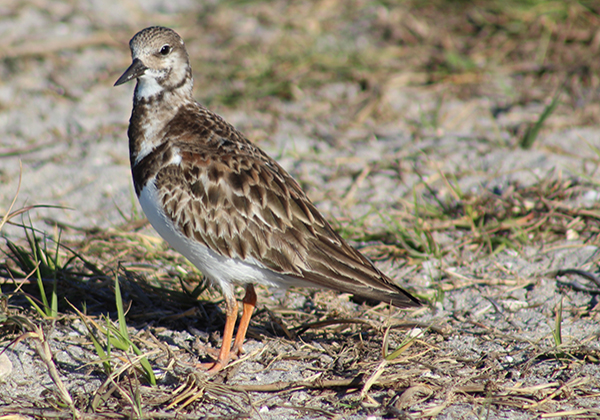VILLAGE OF OYSTER AND TNC Horse island trail
IN BRIEF: One of a half-dozen remaining “seaside” villages, worth a visit for its historical notoriety as much as for birding, which is most productive in winter and during migration seasons.
ACCESS: Public settlement. Public restroom at the end of Crumb Hill Road, at the public boat ramp.
EVERYTHING YOU NEED TO KNOW ABOUT BIRDING THE VILLAGE OF OYSTER
The tiny working-waterfront village of Oyster is usually quiet, with just a few houses and a small aquaculture facility around the harbor, fed by Cobb Mill Creek. This is a community that prizes its quiet. Birders are welcome here, so long as they observe the rules of common sense and common decency; when birding, be aware of surroundings: don’t block the few small roads, and don’t park on a lawn.
At the end of Sunnyside Road (Route 638), there is a turn-around spot, and it is here that most birders begin to look for birds. The salt marsh here can seem empty or, at other times, teem with thousands of birds of dozens of species. The key to understanding when birds will be here is to study tides specific to this site, as well as the variations in tide levels caused by weather and moon phases. Shorebirds and many other marsh inhabitants are hungriest as high tide begins to fall and mudflats with their populations of invertebrates are exposed. Herons, egrets, terns, Black Skimmers, and other birds also take advantage of the lower water, which concentrates their fish prey into pools and narrowing channels. Plan to arrive at this spot (watch for nesting Killdeer here) as the highest tide is about 1.5 hours into ebb; provided the moon’s draw isn’t too powerful, or the wind isn’t too strong out of the east or northeast, the muddy margins of the marsh should become visible then. As the tide recedes further, during just about any time from August through May, flocks of shorebirds should being appearing, having departed their high-tide roosts on hummocks and barrier island beaches. Expected here are thousands of Dunlin, dozens or hundreds of Semipalmated Plovers, Black-bellied Plovers, Whimbrels, Short-billed Dowitchers, Willets, Marbled Godwits (northern portion of flats), and Western Sandpipers. Smaller numbers of Greater Yellowlegs, Ruddy Turnstones, and American Oystercatchers are usually present, and occasionally a few Red Knots; Spotted Sandpipers, Least Sandpipers, or Lesser Yellowlegs might be around the harbor area. Semipalmated Sandpipers are variably present in small numbers usually, in spring and fall. Late in fall, Wilson’s Snipe can be flushed around the harbor margins if there is heavy grass or other vegetation present. Rare shorebirds seen here include Hudsonian Godwit and Long-billed Dowitcher (one spring record and a few in fall through December), and hurricanes have grounded Pectoral Sandpiper, Solitary Sandpiper, Stilt Sandpiper, and other sundry species among the “storm roosts” of terns, gulls, and shorebirds that form in the harbor’s shell parking area. Terns here include Royal, Forster’s, Caspian, with others also rarely seen, especially during foul tropical weather: Black, Bridled, Sandwich, Common. Rare gulls are quite scarce here; single records of Black-headed, Lesser Black-backed, and Glaucous have been noted, with a potential photographed Herring Gull of the vegae subspecies.
Traveling back toward the harbor, there are a few spots on shell surface for cars to pull in. Check the pilings for gulls and terns, the water for waterfowl (and Common Loons), and check the mudflats in the western part of the harbor for shorebirds and wading birds, including American Bittern during migration. A single female-plumaged Common Goldeneye can often be found in the harbor at high tide in winter. The crab traps stored in the harbor serve as resting places for flocks of House Sparrows, which occasionally attract a late Dickcissel in November and December. The nearby reeds and sedges may hold a White-crowned Sparrow or two. One fortunate observer photographed a Northern Shrike here 8 December 2013.
Boat trips out of Oyster in the early fall can be productive for all manner of shorebirds. See more information in the Boat trips section.
Ruddy Turnstone
Double-crested Cormorant, Photo: Robert W. Schamerhorn




